Painting your walls is a transformative endeavor, and choosing the right type of paint is paramount to ensuring a beautiful, long-lasting finish. When painting your home, choosing the right type of paint is crucial for achieving the desired results. But can you use exterior paint for interior walls?
Using exterior paint on interior walls is not advisable. Exterior paint is formulated to withstand harsh outdoor conditions and typically contains robust ingredients, making it potentially harmful for indoor use. These ingredients may pose health risks to occupants and the building structure.
Some research has been conducted on the long-term effects of exposing individuals to exterior paint indoors. Given potential health concerns and uncertainties, it’s prudent to opt for paint specifically designed for interior applications to ensure a safe and suitable environment within your home.
Reasons Why Exterior Paint Should Never Be Used Indoors?
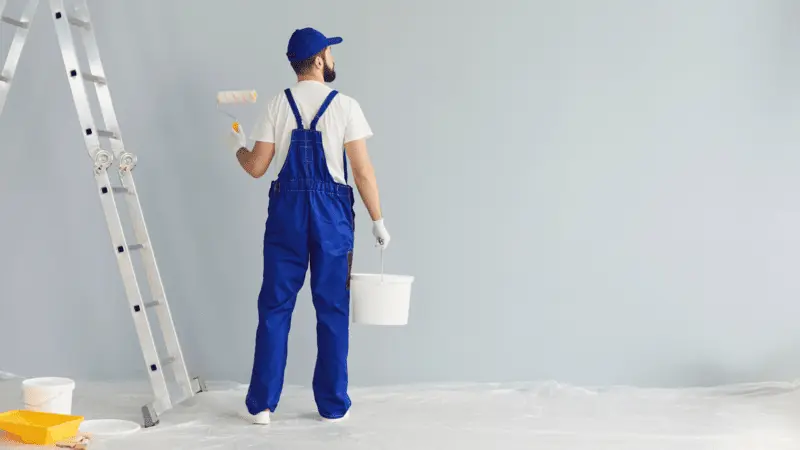
Using exterior paint for interior walls is generally not recommended for several important reasons. While it may not pose immediate danger or health risks, it is not designed to withstand indoor conditions effectively, leading to many problems that compromise its durability and appearance.
Inadequate Durability
Paint designed for use outdoors is made to withstand the rigors of the sun, wind, rain, and snow. When used indoors, it’s exposed to a controlled environment, making it unnecessary for the robust formulation of exterior paint. Consequently, interior walls painted with exterior paint may experience premature fading and degradation.
Quick Fading
Exterior paint is more resistant to fading due to its formulation, which is specifically designed to combat prolonged sun exposure. When used inside, where exposure to direct sunlight is limited, the intense UV resistance of exterior paint is unnecessary, making it susceptible to fading much faster than intended.
Temperature Sensitivity
Outdoor paint is designed to withstand temperature changes. When used indoors, the paint can become too brittle or crack due to the consistent and moderate temperatures, leading to an unsightly appearance and potential structural damage.
Volatile Organic Compounds (VOCs)
Exterior paints often contain higher levels of VOCs compared to their interior counterparts. VOCs can harm human health, and using exterior paint indoors may result in an excess of these chemicals in an enclosed space, potentially causing respiratory issues and other health problems.
Aesthetic Concerns
Interior walls may not benefit from the aesthetic qualities of exterior paint. Its composition, designed for outdoor use, may result in a different texture, finish, or sheen when applied indoors, leading to an unappealing appearance.
Cost-Effectiveness
Exterior paint tends to be more expensive due to its specialized formulation. Using it for interior walls is not cost-effective, as you’re investing in a premium product designed for different purposes, and you will only partially benefit from its intended features and durability.
Difference Between Interior And Exterior Paint
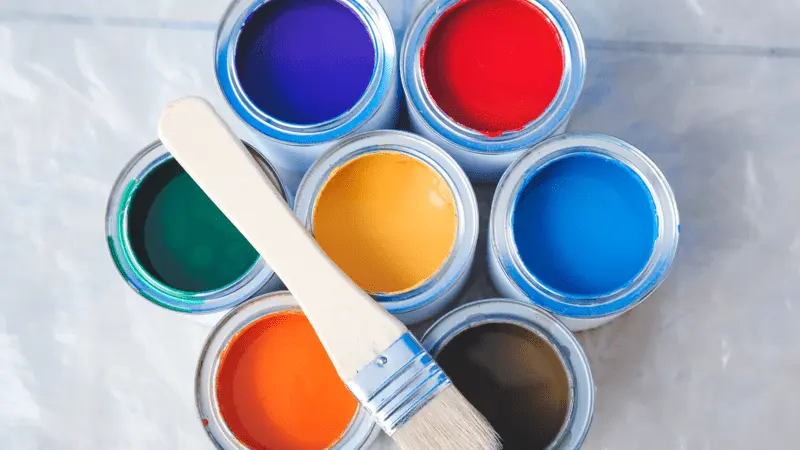
Here are five significant differences between interior and exterior paints:
1. Weather Resistance
- Exterior Paint: Exterior paint is designed to withstand harsh weather conditions, including rain, snow, UV rays, and extreme temperatures. It forms a protective barrier against these elements, preventing damage to the underlying surfaces.
- Interior Paint: Interior paint is not subjected to the same weather extremes. It is not formulated to resist outdoor elements, making it unsuitable for exterior use. It lacks the weather-resistant properties of exterior paint.
2. Mildew and Mold Resistance
- Exterior Paint: Exterior paint is typically formulated to resist mildew and mold growth, making it ideal for areas prone to moisture and humidity, such as the exterior of buildings.
- Interior Paint: While interior paint may have some mildew resistance, it is not as robust. Interior spaces are generally better ventilated and less prone to moisture buildup, so interior paint does not require the same mold and mildew protection.
3. Color Retention
- Exterior Paint: Exterior paint is engineered to maintain its color and finish over a more extended period, even when exposed to sunlight and weathering. UV-resistant pigments are often used to prevent fading.
- Interior Paint: Interior paint is not subjected to the same level of UV exposure and environmental stressors as exterior paint. Consequently, it may be less fade-resistant, and its color may change over time, although this change is typically slower than with exterior paint.
4. Flexibility and Adhesion
- Exterior Paint: Exterior paint is designed to adhere to various surfaces, including wood, metal, and masonry. It also possesses greater flexibility to accommodate the expansion and contraction of surfaces due to temperature fluctuations.
- Interior Paint: Interior paint primarily adheres to interior wall surfaces with minimal temperature variations. It may provide a different level of flexibility than exterior paint.
5. Chemical Composition
- Exterior Paint: Exterior paint often contains additional additives and ingredients to enhance its durability, weather resistance, and adhesion. To ensure long-term performance, it may have higher volatile organic compounds (VOCs) levels.
- Interior Paint: Interior paint typically has lower VOC levels and is formulated with a focus on indoor air quality and safety since it is applied in enclosed spaces. This makes it more suitable for interior environments where air quality is a concern.
Accidentally Used Exterior Paint Inside: How To Remove?
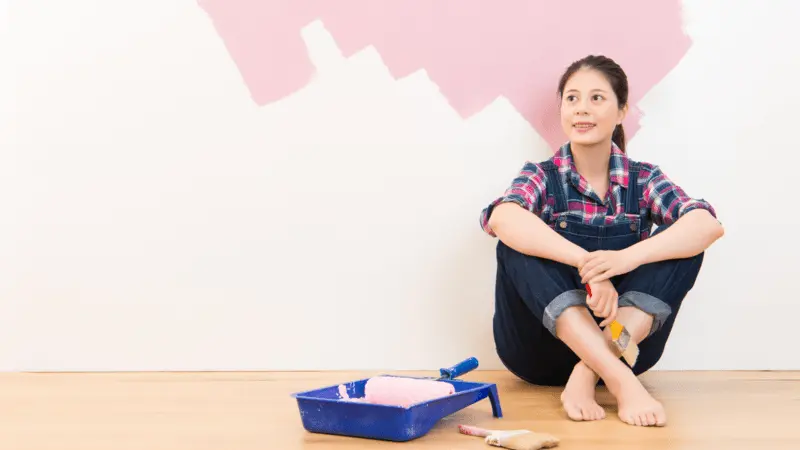
If you’ve accidentally used exterior paint indoors, follow these five steps to remove it from your interior walls effectively:
1. Prepare the Area and Clean
- Clear the area of any valuables and furniture. Place a protective covering like a large blanket to collect paint debris.
- Clean the affected wall by removing dirt or dust with a dusting cloth or brush. Ensure the space is well-ventilated to allow any potentially harmful fumes to disperse.
2. Scrape Off Loose Paint
- Use a paint scraping tool, either manual or electric, to remove the loose exterior paint from the wall. Gently scrape the paint to avoid damaging the wall surface.
- Optionally, you can use paint thinners or similar products to help soften and loosen the paint for easier removal.
3. Apply a Caustic Solution
- Mop the painted wall with a caustic soda solution. Be cautious while handling caustic soda due to its toxicity.
- Allow the caustic soda solution to dry. Once dried, the paint should become easier to scrape off.
4. Eliminate Odor and Residue
- To address any lingering odors from the paint, clean the wall using a mixture of sugar soap.
- Apply an odor-control primer to the wall to help neutralize and mask any remaining smells from the exterior paint.
5. Repaint with Appropriate Interior Paint
- Once the wall is free of exterior paint and odors, repaint it using appropriate interior paint suitable for indoor walls.
- Choose a paint color and finish that matches your interior decor preferences.
How To Safely Paint Your Interior Wall?
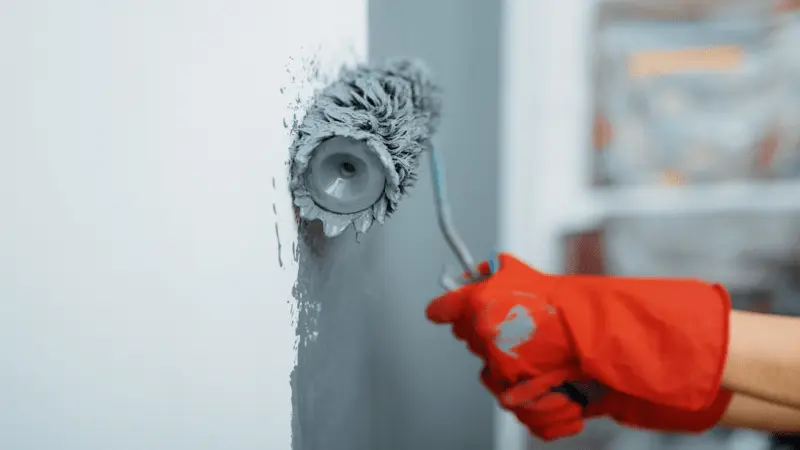
Painting your interior walls can be a rewarding and cost-effective way to revitalize your living space. These seven steps will guide you through the process while ensuring a smooth and professional finish.
Prepare The Space
Begin by clearing the area of any furniture, giving yourself ample room to work. Protect your flooring by placing a drop cloth or plastic sheet.
Clean And Prep The Walls
Clean the walls using sugar soap to remove dirt, grease, and stains. A clean surface is essential for a successful paint job, ensuring proper adhesion and a smooth finish.
Mask The Trim And Edges
Mask off the trim, edges, and corners of the walls to prepare for cutting in. Cutting in involves painting with a brush or application pad in areas where a roller can’t reach, providing clean edges and corners.
Cut In With A Paintbrush
Dip a high-quality paintbrush into the paint about halfway up the bristles. Tap off excess paint on the side of the paint pot. Starting a few centimeters from the edge or corner, create a paint line, moving the brush along the edge for precision.
Roll The Wall
Load the paint roller by pushing it forward on the tray and lifting it to ensure even distribution. Roll across the wall from where you cut in, covering as much area as possible for a consistent finish.
Smooth And Even Application
After covering a wall portion, perform a “lay-off” technique. Starting from the upper left corner, gently roll down the wall, slightly overlapping each roll. This technique helps achieve a smooth, even finish, concealing any brush lines or streaks.
Repeat And Blend
Continue painting in manageable sections, consistently cutting in and rolling. Blend the rolled areas into the brushed edges to maintain a seamless and professional look across the entire wall.
By following these steps and exercising patience and attention to detail, you’ll achieve a beautifully painted interior wall, transforming your living space to your desired aesthetic.
Can I Mix Interior And Exterior Paint?

No, it’s not advisable to mix interior and exterior paint. Interior and exterior paints are formulated differently to withstand specific environmental conditions. Interior paint is designed for indoor use, offering features suitable for controlled climates and minimal exposure to weathering. On the other hand, exterior paint is engineered to endure outdoor elements like sunlight, rain, and temperature fluctuations.
Mixing the two could result in a paint mixture that doesn’t perform optimally for interior or exterior applications, leading to potential issues such as poor durability, color fading, adhesion problems, or compromised weather resistance. Always use the appropriate paint for the intended surface and environment to achieve the best results.
Can Indoor Paint Be Used As Outdoor Paint?
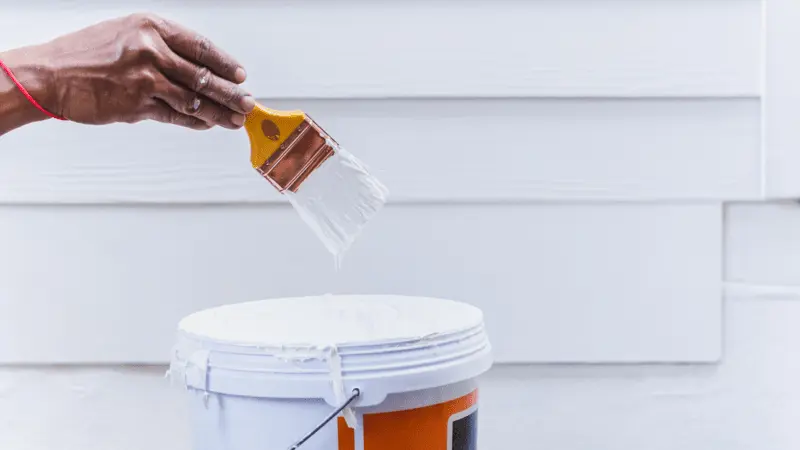
Yes, you can use indoor paint for outdoor applications, but it’s not recommended for long-term results. Indoor paint lacks the specialized formulas that make outdoor paint resistant to weather conditions, UV rays, and other outdoor elements. When used outdoors, interior paint may not endure the elements as well and may require touch-ups or repainting within a year. While it can serve as a temporary solution in certain situations, it’s best to use paint specifically designed for exterior use for a lasting and durable finish. Outdoor paint is formulated to withstand the challenges of weather and sunlight, ensuring a longer-lasting and attractive finish on outdoor surfaces.
Frequently Asked Questions
Can You Use Exterior Paint For Interior Walls?
No, using exterior paint for interior walls is not recommended. Exterior paint contains higher volatile organic compounds (VOCs) and may emit harmful fumes indoors. Additionally, exterior paint may not provide the desired finish and aesthetic appeal for interior spaces.
What Are The Risks Of Using Exterior Paint On Interior Walls?
Using exterior paint indoors can lead to poor indoor air quality due to higher VOC levels. These compounds can cause health issues such as respiratory irritation, headaches, and nausea. The finish and texture of exterior paint may also need to be more suitable for interior surfaces.
Are There Differences In Composition Between Exterior And Interior Paints?
Exterior paints are formulated to withstand outdoor elements like UV rays, moisture, and temperature fluctuations. They typically contain additives that provide enhanced durability. Interior paints are designed for indoor use and have lower VOC levels for better indoor air quality.
What Is The Recommended Paint For Interior Walls?
It’s advisable to use paints specifically designed for indoor use for interior walls. These paints have lower VOC levels, are odorless, and provide a smooth finish suitable for interior spaces. Choose from options like latex or water-based paints, which are safe and environmentally friendly.
How To Safely Use Exterior Paint?
To safely use exterior paint, follow these steps:
1. Choose a well-ventilated area.
2. Wear appropriate protective gear, including a mask and goggles.
3. Follow manufacturer instructions for mixing and application.
4. Dispose of waste materials responsibly, following local regulations.
Need To Paint Your Interior Or Exterior? InexMax Can Help!
Are you looking to refresh your interior or exterior with a fresh coat of paint? Look no further than InexMax! Based in Brisbane, Queensland, we are your top choice for professional painting and decorating services. Our commitment to quality and efficiency sets us apart, making us the go-to option for residential and commercial painting projects. With over a decade of experience, InexMax has completed over 500 projects, earning a solid reputation for excellence in interior and exterior painting. Contact InexMax today for all your painting needs!
